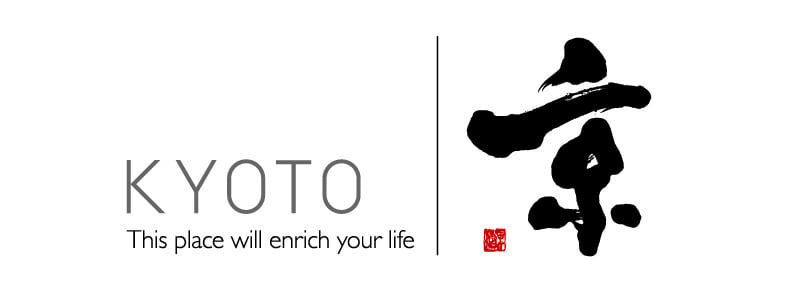Exploring Autumn Colors in Kyoto’s Scenic Rakusai Area
Time required : 1 day
- Outdoor
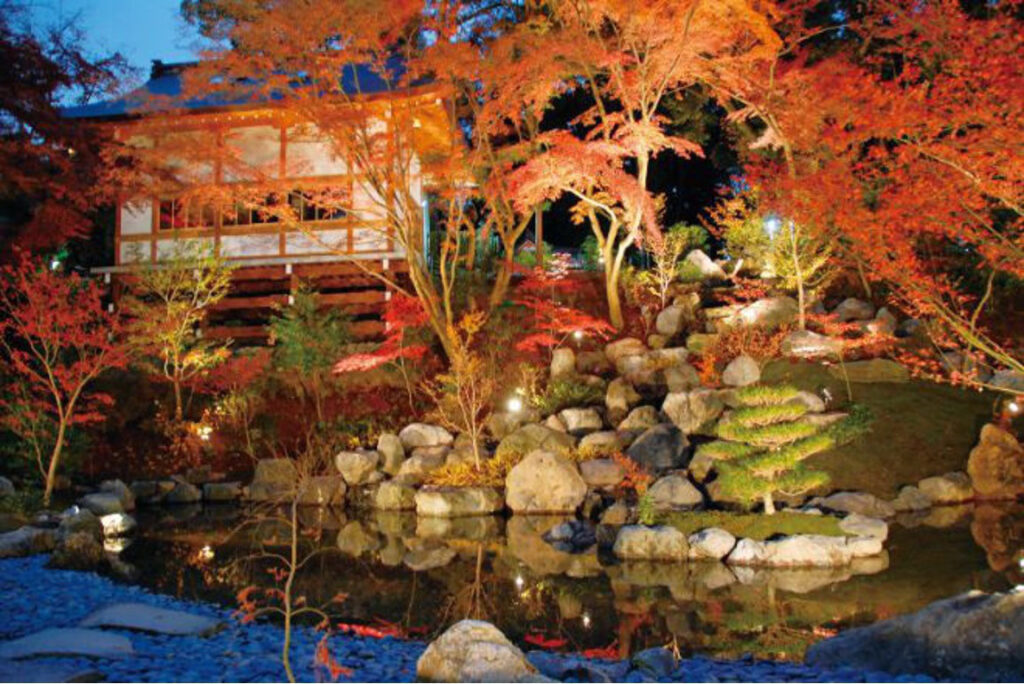
Western Kyoto is home to some of the prefecture's best spots for enjoying autumn leaves. In this tranquil region, you’ll find stunning fall colors at temples like Yanagidani Kannon (Yokoku-ji Temple) and Komyo-ji. This route invites you to soak in the serene beauty of nature while discovering the timeless charm of Kyoto’s historic temples and shrines.
1Yanagidani Kannon (Yokoku-ji Temple)
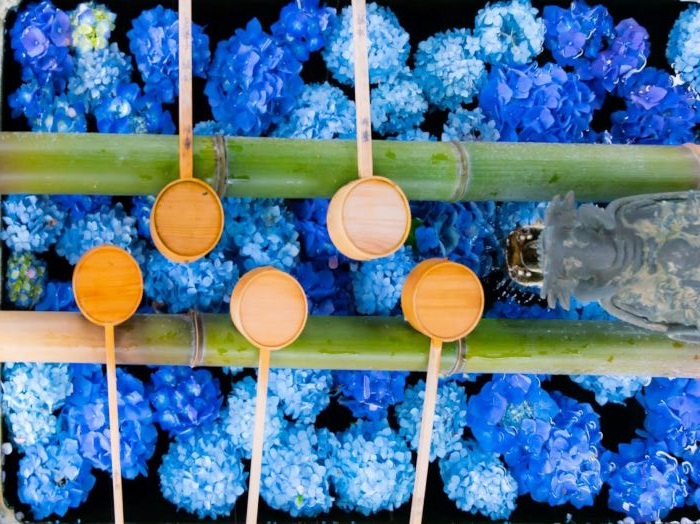
Yanagidani Kannon (Yokokuji Temple) is located in Nagaokakyo City, not far from Kyoto City and close to the famous Otokuni Bamboo Grove, where the main attraction is the eleven-faced, thousand-armed statue of the bodhisattva Kannon statue. The temple is built on the side of a mountain, and the inner temple building and main hall are connected by a long corridor surrounded by a Kyoto-designated scenic garden, Jodo-en. On the second floor is the Kamishoin Study, which was once a designated study room for elites during the Meiji era (1868-1912). These days, the study room and its beautiful view of the gardens is open to the public. The Yokokuji Hydrangea Path is a famous place to enjoy hydrangeas and inludes over 4,500 hydrangea plants that bloom in June and in the summer months. In autumn, the deep red carpet of the Kamishoin Study and bright red autumn foliage creates an impressive sight, open for viewing only on the 17th of each month. It's also widely believed that there is holy water ("oko-zui") at Yokoku-ji Temple connected to the famous Buddhist monk Kukai, and that this water is thought to heal diseases of the eye.
- Address
- 2 Donotani, Jododani, Nagaokakyo City, Kyoto Prefecture
- Access
- Train:
From Hankyu Nishiyama Tennozan Station, take Hankyu Bus to "Okukaiin-ji" bus top, then walk approximately 40 minutes or take a taxi for 10 minutes.
From Hankyu Nagaoka Tenjin Station, take Hankyu Bus to "Okukain-ji" bus stop, then walk approximately 40 minutes or take a taxi for 10 minutes.
Approximately 15 minutes by taxi from JR Nagaokakyo Station.
Car: About 10 minutes from the Nagaokakyo IC exit (on the Kyoto Ju-kando Expressway)
*On the 17th of each month there are shuttle buses from the east exit of Hankyu Nishiyama Tennozan Station and the west exit of JR Nagaokakyo Station (300 yen one way). The bus will depart once it is full, regardless of time. For more information please refer to the website (Japanese only) https://yanagidani.jp/access/
15 minutes by car
2Komyo-ji Temple
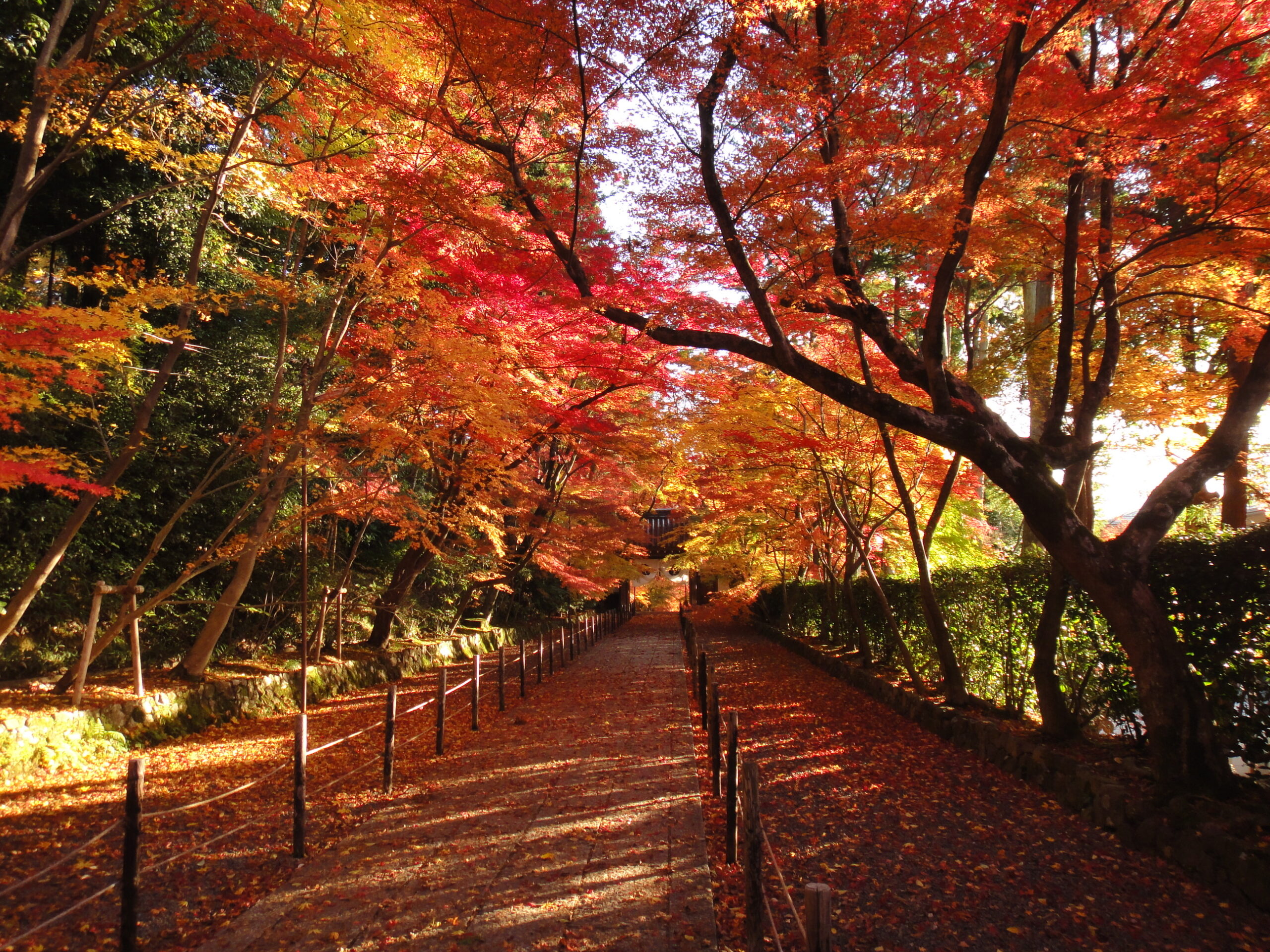
Komyo-ji Temple was first built in 1198 by the soldier Kumagai Naozane in an area favored by his master Honen. Today, it the head temple of the Seizan sect of Pure Land Buddhism. Visitors can tour the temple itself and see the beautiful sights inside, as well as those of the garden. The temple has an excellent collection of Buddhist artwork and statues, which are on display to visitors. Inside the Mie Hall, the principal statue is papier-mâché, and it is said that Honen made it himself by dipping a letter from his mother in water. When you enter the temple main gate, the road is divided into two. The gentle slope leading to the main hall on your right is called “Omotesando.” This approach is designed so that both women and the elderly can easily climb it and is known as the “women’s slope.” The road from “Chokushimon Gate” to “Somon Gate” on the left is commonly known as the "Maple Path," and in the fall the autumn leaves on both sides of the approach, which stretches for about 200 meters, make a brightly colored tunnel of fall colors. The path is one of the most famous spots for autumn leaves in Kyoto.
- Address
- 26-1 Aosaijonai, Nagaokakyo City, Kyoto Prefecture
- Access
- Get off at "Nagaokakyo Station" on the JR Kyoto Line or "Nagaoka Tenjin Station" on the Hankyu Kyoto Line and board the Hankyu Bus, and get off at "Asahigaoka Home Mae"
15 minutes by car
3Yoshimine-dera Temple
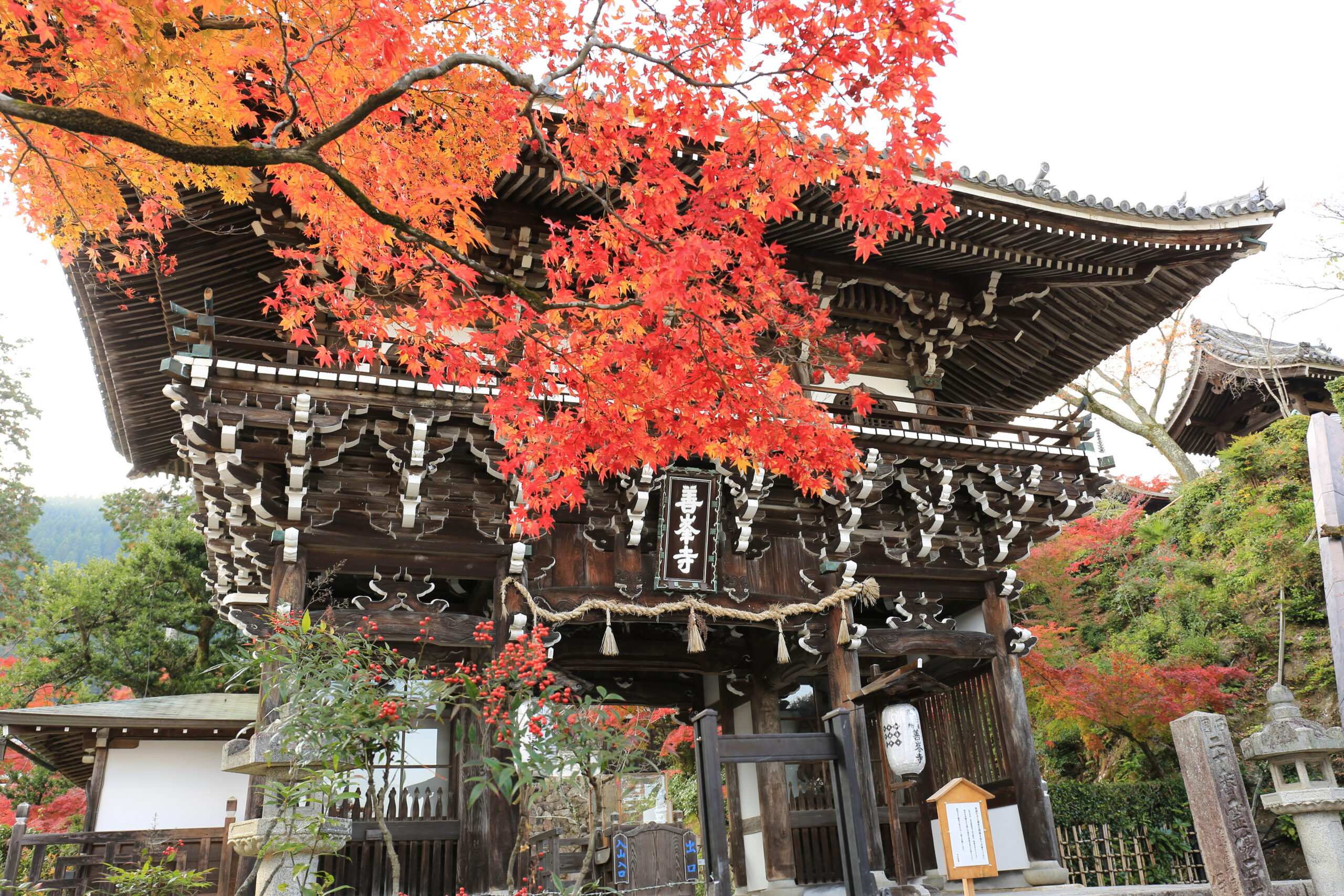
Yoshimine-dera Temple, located in Nishikyo-ku, Kyoto, is a Tendai Buddhist Temple and is the 20th temple of the Saigoku Kannon Pilgrimage. The Temple is said to have been built by the famous monk Gensan in 1029 with a statue of a thousand-armed Kannon, or the bodhisattva known as Avalokiteśvara, as the main statue. The temple once included 52 buildings but most were burned down during the Ōnin War (1467-1477). After the war, the temple was rebuilt by Keishoin, the mother of Tsunayoshi Tokugawa, the fifth Tokugawa shogun, and now includes nearly 20 temples including the “Tahoto,” which is designated as an important cultural property of the country. The grounds are large (almost 25 acres) and includes gardens perfect for an afternoon stroll and overlook Kyoto city. A highlight is a pine tree there is a pine tree called "Yuryu no Matsu", which is only about than 2m high but extends more than 37m wide and is designated as a national natural monument. The grounds are a great place to enjoy seasonal flowers throughout the year as well, but they are especially famous for its cherry blossoms in spring and autumn leaves in autumn. In spring, more than 100 cherry blossoms of various types such as Higan cherry, weeping cherry, and peony cherry blossoms bloom for a month. In autumn, not only the grounds but also the entire mountain side are dyed red with autumn leaves.
- Address
- 〒610-1133 1372 Oharano Oshio-cho, Nishikyo-ku, Kyoto
- Access
- Bus: From "Mukomachi" station on the JR Kyoto line, take the Hankyu bus (bound for Yoshimine-dera) and get off at "Yoshimine-dera," then walk for 8 minutes.
From "Higashimuko" station on the Hankyu Kyoto line, take the Hankyu bus (bound for Yoshimine-dera) and get off at "Yoshimine-dera", then walk for 8 minutes.
Car: Approximately 15 minutes from Kyoto Jukan Expressway "Oharano" I.C.
15 minutes by car
4Kinkeien Garden at Nagaoka Tenmangu Shrine
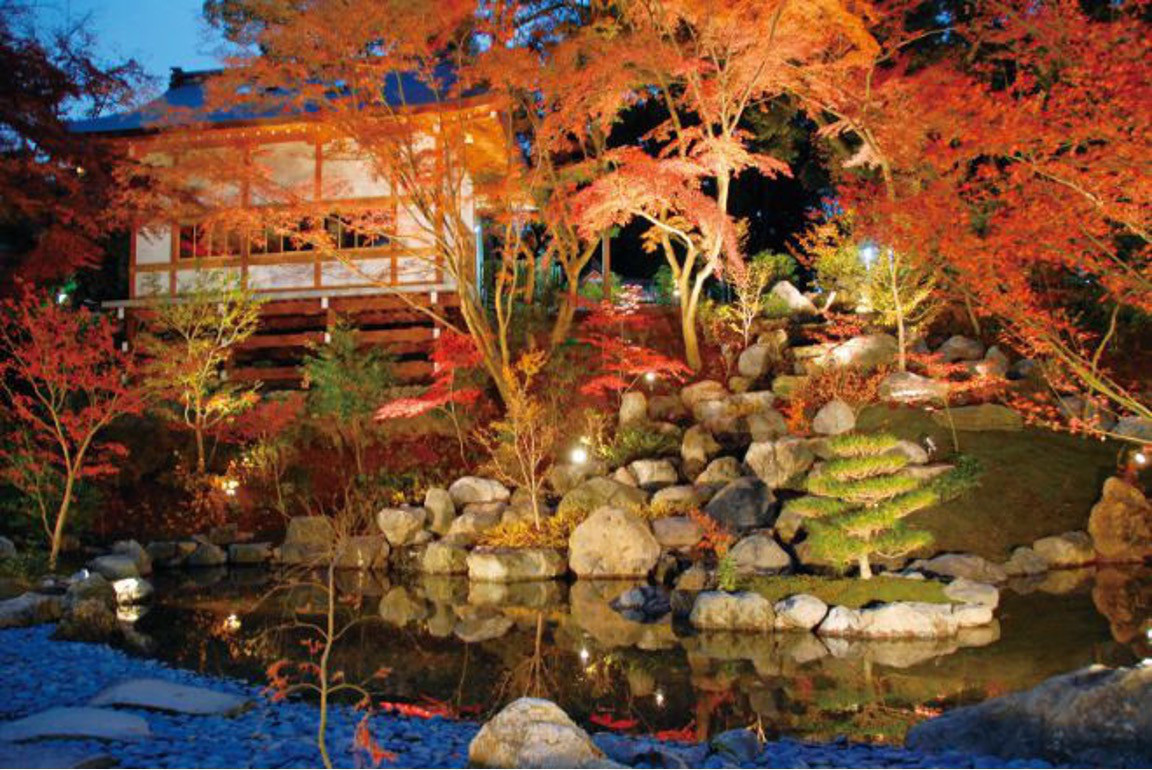
Nagaoka Tenmangu Shrine, a cherished symbol of Nagaokakyo City, is a historic site dedicated to Sugawara no Michizane. Spanning about 66,000 square meters, the shrine’s grounds are rich with natural beauty and seasonal splendor.
From late November to early December, the shrine will host the first 'Kyoto Nishiyama Nagaoka Tenmangu Hanatoro' event. Lanterns will softly light the pathway connecting the grand torii gate to the Kinkeien Garden, casting a warm, magical glow across the grounds.
The Kinkeien Garden will also be illuminated during this time. Whether you relax in the azumaya pavilion or take in the view from the elevated Ema Hall, the garden’s nighttime scenery transforms into a mystical landscape, offering a captivating contrast to its daytime charm.
